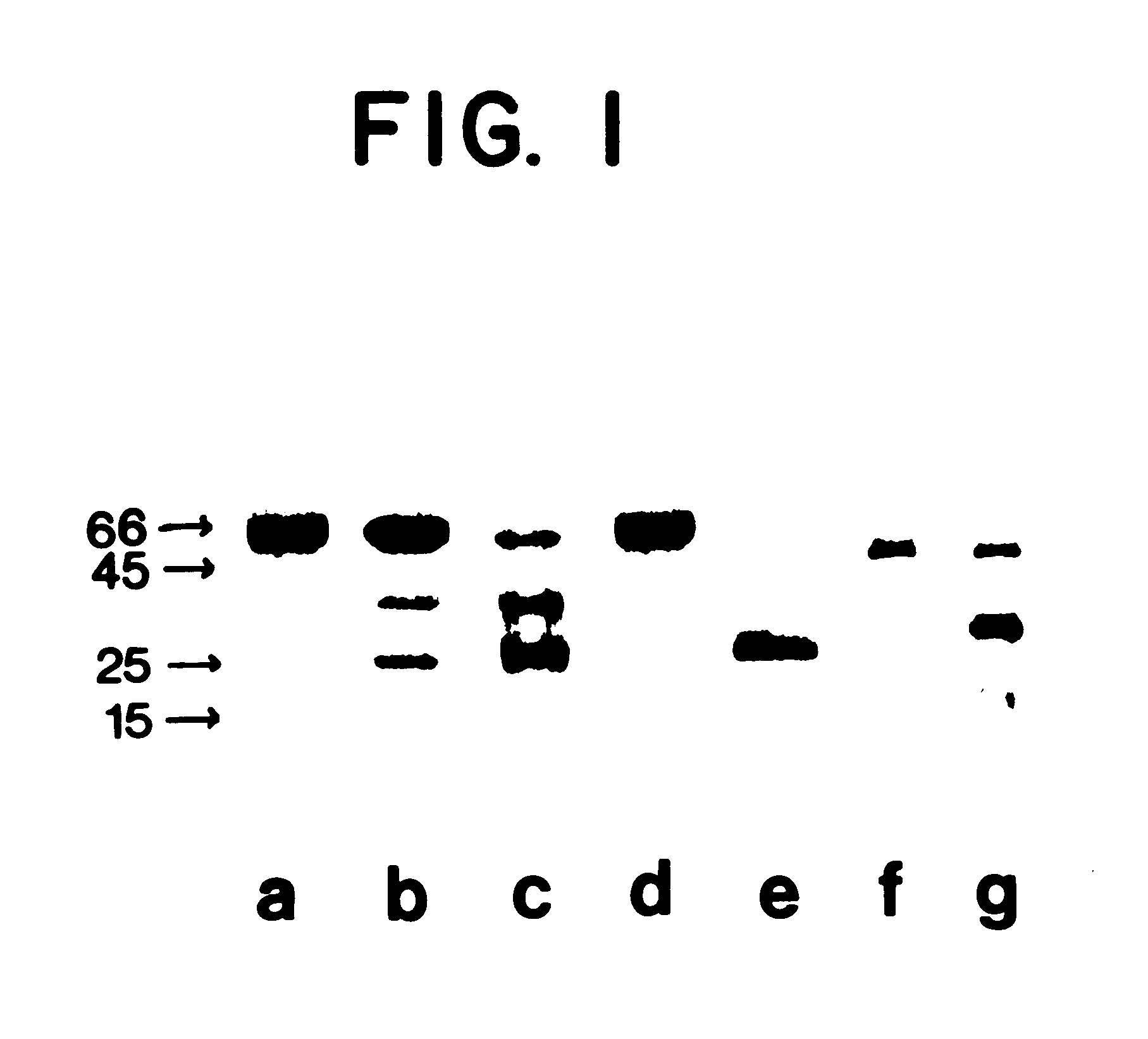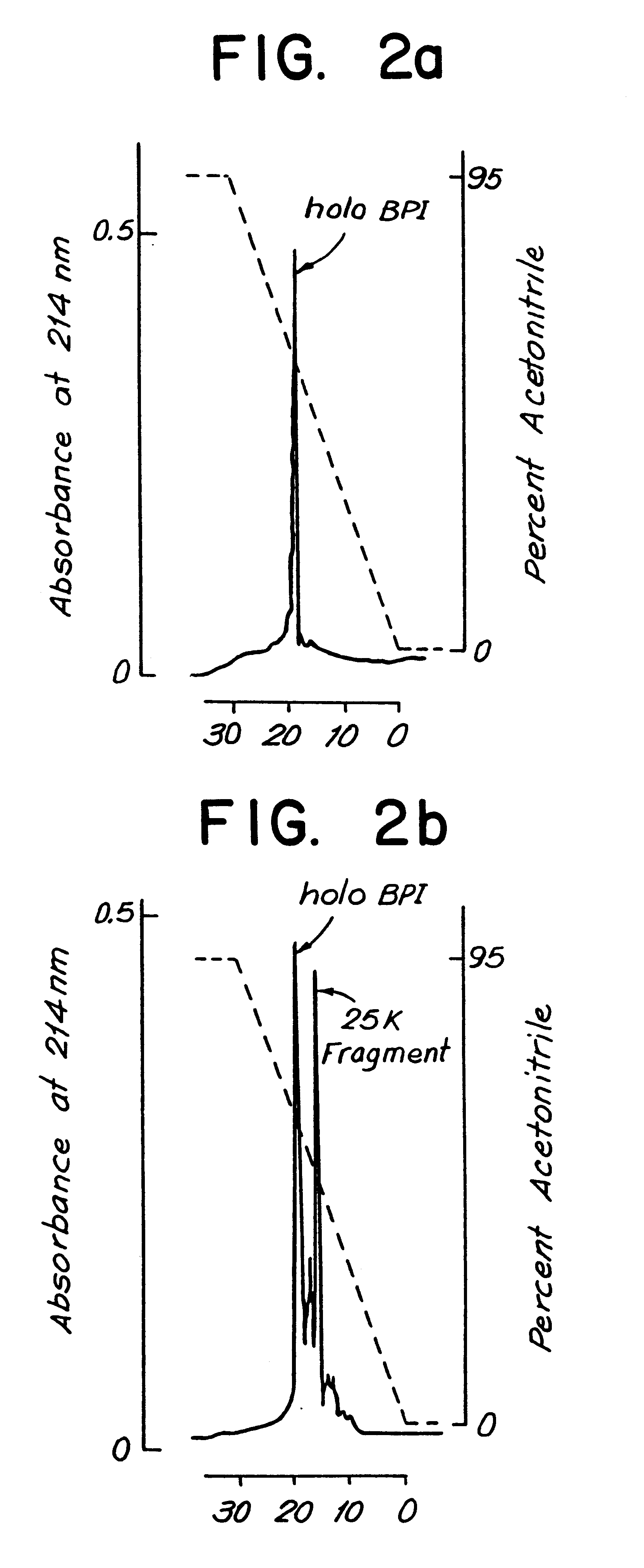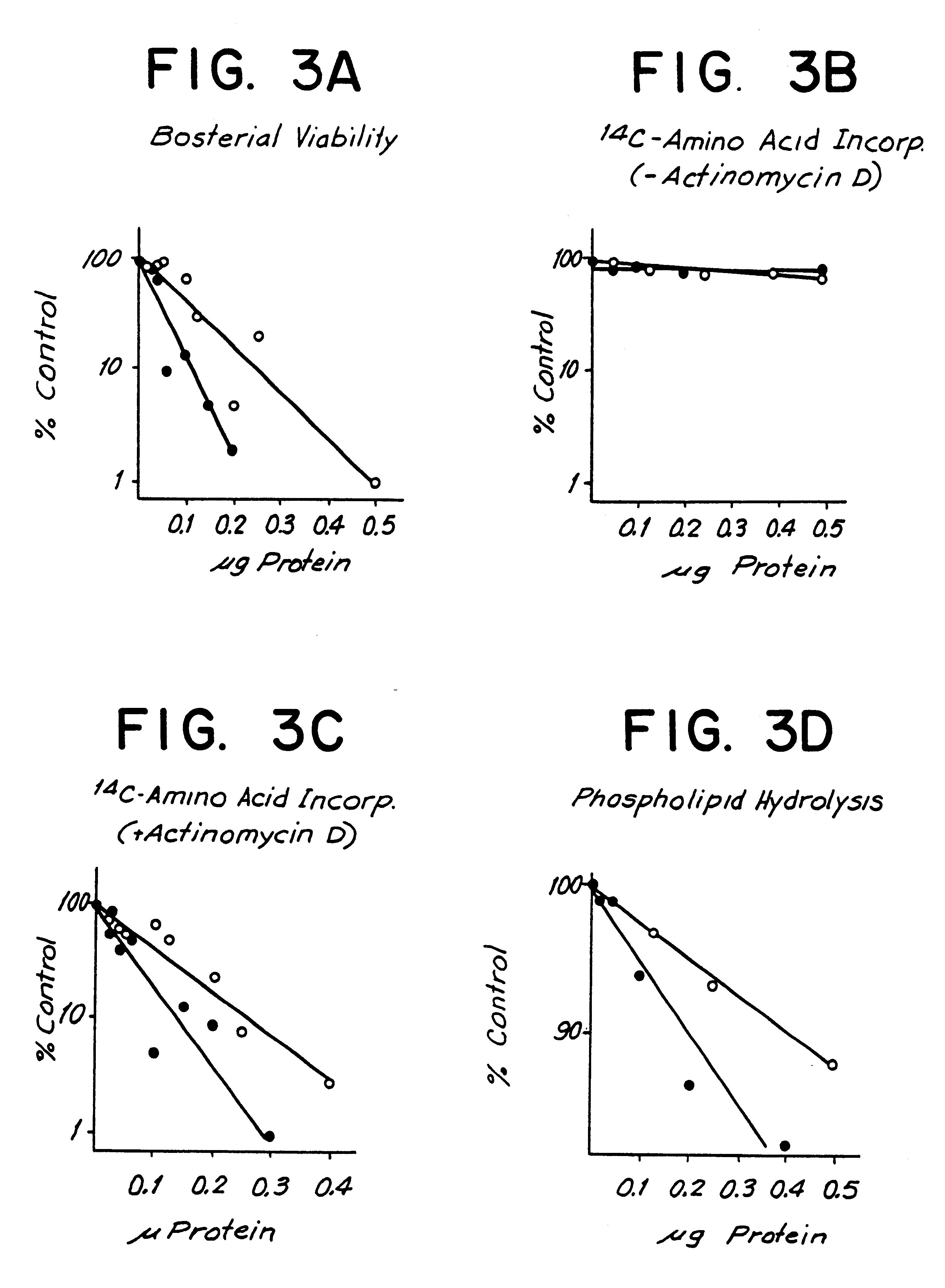Biologically active bactericidal/permeability-increasing protein fragments
a technology of bacterial permeability and protein fragments, which is applied in the field of biologically active peptide fragments of mammalian bpi, can solve the problems of hampered sequencing and determination of the structural organization of bpi, and antibodies directed against holoproteins that cannot recognize these fragments, so as to increase the permeability of gram-negative bacteria, enhance the effectiveness of such antibiotics, and increase the sensitivity
- Summary
- Abstract
- Description
- Claims
- Application Information
AI Technical Summary
Benefits of technology
Problems solved by technology
Method used
Image
Examples
example 2
Production of Human BPI Fragments
Purified human BPI holoprotein was incubate. in 0.1M HEPES-NaOH buffer, pH7.4 for 18 hours, and then analyzed by sodium dodecylsulfate polyacrylamide gel electrophoresis (SDS-PAGE) in 12% polyacrylamide gels using the buffer system containing 0.375M Tris / HCl and 0.1% SDS of Laemmli, U.K., Nature 227: 680-685 1970 incorporated by reference. The results are shown in FIG. 1. In FIG. 1, lanes A-E were stained using the well-known Coomassie blue technique and lanes F and G were silver stained using a commercial kit (Bio-Rad, Bio-Rad Labs, Richmond, Calif.).
Upon incubation in 10 mM ammonium acetate buffer (pH 4.6) at 4.degree. C. for two months, 10 micrograms of the purified human protein (FIG. 1, lane A) fragmented into two species of approximately 35 and 25 kDa (FIG. 1, lane B). Incubation of purified human BPI holoprotein (10 micrograms) for 24 hours at 37.degree. C. in 0.1M HEPES / NaoH buffer, pH 7.4, enhanced the accumulation of the two species, partic...
example 3
NH.sub.2 -Terminal Amino Acid Composition and Sequence Analysis of BPI Fragments
The human 25 kDa BPI fragment of the present invention was subjected to amino acid analysis, and the results were compared with the amino acid analysis of purified 60 kDa human holoprotein. Amino acid compositions were determined using a Waters Pico-Tag amino acid analyzer (Waters Associates, Milford, NA) as described (Bidlinamyer, B. A. et al., J. Chrom. 336: 93-104 1984 incorporated, by reference). Samples were pretreated in vacuo for 24 hours at 110.degree. C. with 5.7N HCl containing 0.05% phenol. The results are shown in Table 1.
The values shown above represent the mole fraction (%) of each amino acid and are the mean of three independent determinations "Asx" stands for asparagine and / or aspartic acid and "Glx" stands for glutamine or glutamic acid.
Amino acid analysis showed that the human 25 kDa fragment was enriched in lysine and serine and contained less non-polar residues when compared with the ...
example 4
Biological Properties of the BPI Fragment of the Present Invention
The antibacterial effects of the 25 kDa human BPI fragment of the present invention were compared with the known activities of the holoprotein. E. coli J5 (obtained from Dr. L. Leive, NIH Bethesda, Md.) which produces short-chain lipopolysaccharides (LPS) in galactose-free culture medium, were grown overnight and then subcultured at 37.degree. C. in triethanolamine-buffered media as described in Simon. E. G. et al., (Proc. Nat. Acad. Sci. USA 51:877, 1964, incorporated by reference). 5.times.10.sup.6 E. coli J5 were incubated in a volume of 250 microliters with increasing amounts of either the human holoprotein or the human 25 kDa fragment of the present invention. The effects on bacterial viability were determined either by (1) diluting an aliquot (5.times.10.sup.5 bacteria) of the incubation mixture into 2 ml of nutrient broth (Difco Laboratories, Detroit, Mich.) and measuring bacterial growth (absorbance at 550 nM ...
PUM
| Property | Measurement | Unit |
|---|---|---|
| molecular weight | aaaaa | aaaaa |
| molecular weight | aaaaa | aaaaa |
| molecular weight | aaaaa | aaaaa |
Abstract
Description
Claims
Application Information
 Login to View More
Login to View More - R&D
- Intellectual Property
- Life Sciences
- Materials
- Tech Scout
- Unparalleled Data Quality
- Higher Quality Content
- 60% Fewer Hallucinations
Browse by: Latest US Patents, China's latest patents, Technical Efficacy Thesaurus, Application Domain, Technology Topic, Popular Technical Reports.
© 2025 PatSnap. All rights reserved.Legal|Privacy policy|Modern Slavery Act Transparency Statement|Sitemap|About US| Contact US: help@patsnap.com



